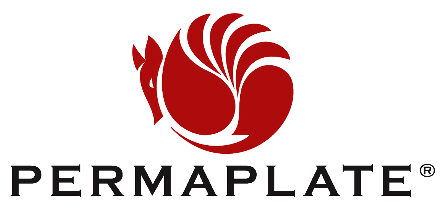I’m sure I’m not alone in thinking about how much time, money, resources and new product is spent every six months at the High Point Market. If we add the Las Vegas markets, we’re considering four events in a single year at which retailers expect to be greeted with new product. Why?
Consumers have absolutely no sense of changes in home furnishings trends within any single year, and as hard goods, furniture isn’t susceptible to the winds of changing fashion blowing four times per year. Heck, even the fashion industry doesn’t pretend that consumer tastes change this quickly.
The end result inevitably is a colossal amount of waste, and much of it is in the guise of self-service. Hosting or putting on markets is a separate business, one that is more tied to real estate and hospitality, so it’s in the best interests of the markets to hold them as often as consensus deems possible. It means more rents, more fees, more contracts and more for all of the tertiary services, such as catering, entertainment, hospitality and transportation.

I wish there were a way of measuring the waste, a metric that would have to account for pulling sales reps off the road, executives out of their offices and retailers off of the front lines to hole up in High Point or Vegas to kick the tires on just enough new product to present the illusion of a reason for gathering in the first place.
Covering these markets for a decade or so, I charted several strategies employed by manufacturers to create buzz, generate showroom traffic and persuade and cajole buyers into commitments. Some of them made a lot of sense; a lot of them made no sense at all.
Do-Si-Do
One of the smarter moves I saw was the Texas two-step danced by Hyundai to bring new occasional to market. The first step was to unveil a smattering of new prototypes at premarket, enough to merit visits by the big buyers. At least a few of those pieces would have fairly obvious design weaknesses, like their scale or a less-than-optimum mix of materials. This defect-in-the-design strategy was intentional. The big, experienced buyers would zero in on the problem immediately and recommend a fix, like bringing the scale down 10% or 15%. Hyundai anticipated these suggestions, according to the executive I spoke with, and would have the “corrected” version already in production to bring to High Point at market even as premarket was underway. Those same buyers returning to the Hyundai showroom for market, the second step, would see the improvement, feel like they had a part in designing the piece and often commit to carrying the finished version.
It’s the same reason “no bake” cake and cookie mixes have the consumer add an egg. The recipe doesn’t need the egg, but the simple act of cracking it and stirring it in gives us the impression that we’re involved, that we’re baking, rather than mindlessly pouring, stirring and waiting.
A firm hand
Among the most disciplined manufacturers in terms of using markets during my watch were Stickley and EJ Victor, which admittedly had their higher-end market positions to use to their advantage. Each would have only a very few highly targeted pieces that clearly rounded out their already formidable lines, pieces with a pedigree, a reason for existing, for which an appetite among consumers had been already well established. These introductions were always the proverbial “no-brainers,” which is to take nothing away from the very careful thinking that went into their issue (or, in many cases, reissue). It seemed these pieces would have been introduced at these times whether there were markets or not. The big show offered buyers the opportunity to reconsider the lines as coherent wholes.
Hickory Chair under Jay Reardon, Kindel and John Widdicomb applied this same discipline. I’ll admit it took me several markets to get it.
Gary Ash, a maestro at merchandising for so many years at Lane, worked closely with department store buyers to conceive of, design and roll out whole-house collections under license from a name or brand already in the public’s awareness. But not every market.
Gary knew before the big splash in High Point that the entire collection wouldn’t make muster for any number of reasons, including and especially price point, but that enough would stick to merit a verdict of success at retail. Hearst Castle and Marrakesh, one of the most jaw-droppingly beautiful collections I ever saw, are two examples that come to mind.
Oh, and he would always have a few new topical cedar chests to reassure buyers that Lane was still committed to that business, as well.
Va bene
Natuzzi proved an interesting showroom visit because product introductions were so closely intertwined with and dependent upon the company’s distribution and its promise of exclusive product. You could track the highly targeted introductions by metro markets in which Natuzzi sought to break into or expand. This, too, took me a few markets to figure out, but it explained many of the product development, merchandising and, eventually, vertical integration moves the company made.
Not coincidentally, a trip to Trieste, Udine and Santeramo, Italy, to see how Natuzzi worked its just-in-time supply chain helped contextualize what I’d been seeing in the big ship in High Point every six months. This trip also showcased Pasquale Natuzzi’s charisma and vision, and the devotion among employees he inspired.
A variation of this distribution-first strategy that avoided the pressures to bring out new product just because another market was upon them was (and remains) Ethan Allen’s annual dealer conference, which put into one snow globe in Danbury the entire business model of the vertically integrated company. Visiting these conferences always impressed in their precision planning and unity of purpose, with much of this attributable to the Zen master of corporate discipline, Farooq Kathwari.
Several manufacturers, it seemed to me, got caught up in the costly and quixotic pursuit of market buzz, attention and hoopla, breathlessly launching a big collection almost every market, often with a marquee licensed name. Oftentimes, the big collection of the previous market hadn’t even hit retail floors yet.
Name-dropping
We, the trade press, poured gas on this fire by devoting so much ink to these big splashes because, well, it’s what we do. We love the big names, the glitter and shine, the celebrity. We are geared to trumpet what’s new, big, bold and attention-getting, almost to the exclusion of anything else. We’re in the attention business. And these were stories that almost wrote themselves, narratives that were sort of “too big to fail.”
I couldn’t wait for premarket to find out which “names” Ladd was bringing to High Point a month later. We covered the daylights out of Ernest Hemingway, Martha Stewart, Thomas Kinkade, Grant Hill, Dennis Conner, Bill Blass, Arnold Palmer and so many others. Of course we did. And, of course, manufacturers would be interested in leading coverage and gaining mind share as often as they could. (The product designers behind the scenes on these Hollywood productions, who never got a moment’s rest, rarely got the attention they deserved.)
But, oh, the waste. Drifts of cardboard, Styrofoam, bubble wrap, wiring, lumber scraps and fixtures washing up on the shores of High Point’s sidewalks, loading docks and garbage bins each and every premarket, each and every market. The waste was stunning; I’m sure it still is.
And all of this wasted money and time are resources that could have been leveraged in more meaningful ways, like technology, tooling, sourcing and market research. So, as the dust settles on yet another big show, hear the clarion call to higher efficiencies, smarter merchandising and more rationale business practices. As I know you know, more than competing against each other, you are competing against travel, consumer electronics, automotive and the many purchase decisions other than home furnishings that consumers have. It’s an industry thing.






